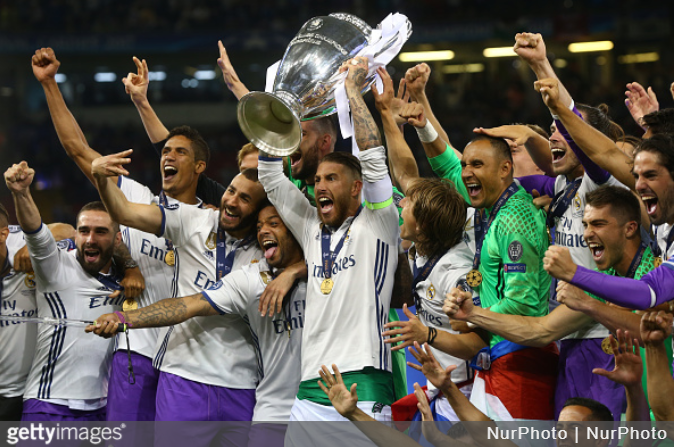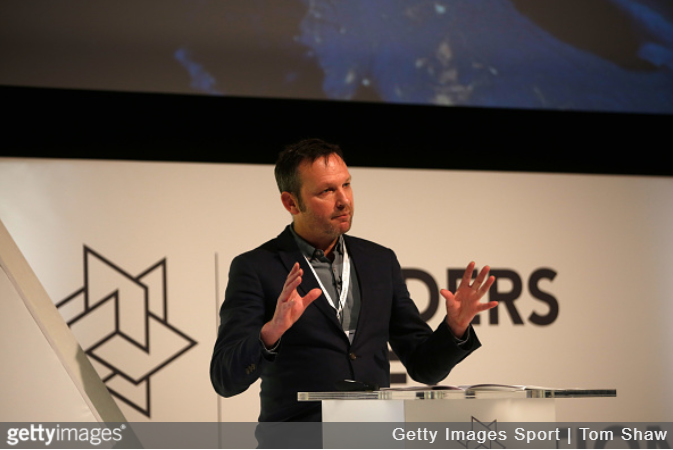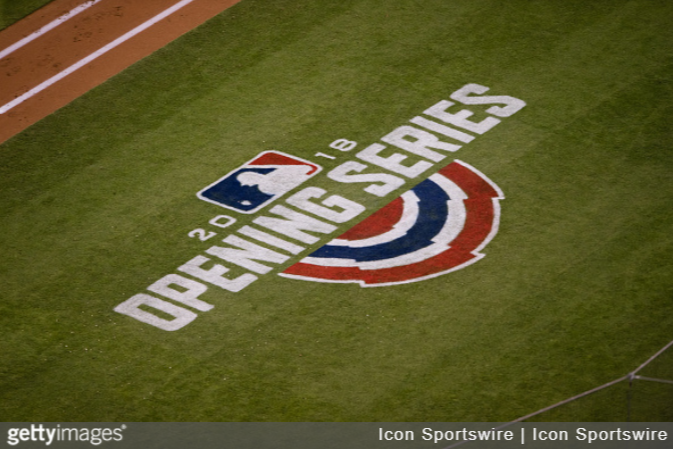In February, a boxing match that was live streamed on YouTube attracted an audience of over 16 million people, despite not featuring any of the sport’s big names such as Anthony Joshua, Tyson Fury or Floyd Mayweather. In fact, it didn’t even feature a professional fighter. Instead, it was YouTube stars KSI (real name Olajide Olatunji) and Joe Weller who drew in that mass online audience as well as a live crowd of 7,500 at the Copper Box Arena in London. It was the biggest amateur boxing match of all time, between two men who hadn’t even stepped foot in a ring a year previously.
The event, which also featured four YouTuber undercard fights, was the latest piece of evidence that we truly are living in ‘the YouTube generation’. Considering that KSI has 18.5 million subscribers on YouTube, whilst Joe Weller has 4.8 million, it is perhaps not surprising that the fight’s peak audience of 1.6 million was higher than that of Sky Box Office’s peak audience of 1.5 million when Anthony Joshua fought Wladimir Klitschko last April.
But it wasn’t the first time that amateur sport has proved a big hit on the world’s biggest video sharing site. Since 2015, YouTuber Spencer Owen has organised the annual ‘Wembley Cup’ in collaboration with EE, which has seen two teams of popular figures from the platform face off in a football match at the national stadium. For the past two years, legends such as Steven Gerrard, Robert Pires and Patrick Kluivert have also been involved. Again, these games have been streamed live on YouTube and attracted audiences in the millions, a target that many Premier League games on Sky Sports and BT Sport can’t reach. Similarly, two charity football matches arranged by ‘The Sidemen’ – a group of seven YouTubers with 50.8 million subscribers put together – have been watched by a combined total of over 20 million people on YouTube.
If you have watched any of the Wembley Cups, or indeed February’s boxing match, you will have heard the voice of The True Geordie, real name Brian Davis. He has over 700,000 subscribers on YouTube as well as a hugely popular podcast which has featured the likes of Robbie Williams, Alan Shearer and Chris Eubank in the past. Davis has become synonymous with viewers as the commentator on these popular YouTube sporting events, and made a documentary following the KSI vs Joe Weller fight entitled ‘Walk the Walk’. On this, he made the claim that “YouTube in 20 years time is going to be the home of sport”.
It’s a big statement, and taking into account YouTube’s rapid rise and the huge success of the above mentioned events, one would be naive to write off the possibility, as much of the mainstream media appear to be doing. However, right now it’s not something we are likely to see, as when asked if YouTube was interested in acquiring exclusive live sports rights, the site’s head of sport for EMEA Tomos Grace told British business newspaper City A.M.: “That’s not our game”.
But that isn’t to say that we won’t see any live sport on the platform, with Grace continuing: “We want to work with rights holders, we want to work with broadcasters, we want to work with clubs to help them amplify the reach that they have and amplify the rights that they have”. Indeed, that is what they have already begun doing, with BT Sport one of the first mainstream media companies in the UK to work with YouTube and other ‘new media’ organisations.

In 2015-16 and 2016-17, BT broadcast the Champions League and Europa League finals in 4K ultra-high-definition for free on YouTube. Whilst this may seem like an unjustifiable decision considering they paid £1.2 billion to retain exclusive rights to the competition last year, there is a logic behind it. When the original deal was announced, John Petter, chief executive of BT Consumer, said the move would “bring BT Sport to a new generation of younger sports fans”.
This has been echoed Chief Operating Officer Jamie Hindhaugh, who explains how the more exposure BT’s free content gets, the more likely audiences are to then pay to subscribe. He uses BT Sport Score, the channel’s weekend punditry programme (much like Soccer Saturday on Sky and Final Score on the BBC), which is free to watch on Twitter, as an example.
“When you put something like BT Sport Score on Twitter, it amplifies your programming,” Hindhaugh told The Drum. “It gives people a chance to start building a relationship with BT Sport. [It’s an] awareness drive of seeing who our talent are, seeing the production, showing that we’re accessible, showing that we want to engage.
“Brand awareness is almost as important as subscription numbers. The reason people subscribe is because we’ve got great live content. You can do all that social stuff, all of that interaction, but with the best will in the world if you haven’t got exclusive Champions League, then there are certain people who will never subscribe.”

The decision to broadcast European football for free on YouTube has paid off. The Champions League final saw a 5% viewer increase from 2015 to 2016 and a further 8% increase from 2016 to 2017. In total, 2.1 million people watched the 2017 Champions League final online (which includes the BT Sport app and website alongside YouTube).
Arguably one of the biggest reasons for the recent success of live sport, whether amateur or professional, on YouTube is that it has been largely absolutely free for audiences. Whereas a Sky Sports subscription costs £49.50 a month and BT charge £22.99 a month for their package without broadband, audiences haven’t had to pay YouTube a penny to watch to watch KSI vs Joe Weller, The Wembley Cup or BT’s coverage of the Champions League. This poses two questions. Firstly, is this a sustainable feature that would be able to be kept if YouTube did become the home of live Premier League football for example? Secondly, are the viewing figures for sport on YouTube at an advantage because the content is free?
Whilst some live sport would potentially remain free, it’s hard to imagine that a fee wouldn’t be involved somewhere. One of the reasons why Sky and BT offer inflated subscription prices is because they have had to pay astronomical sums of money to acquire the rights in the first place – £4.2 billion and £960 million respectively. However, what YouTube does have on it’s side is that it is an attractive partner to broadcasters because of it’s large reach and ability to attract new audiences and customers. What is even more promising is that, as outlined by Tomos Grace, YouTube are more than happy to continue to form these partnerships.
In the USA, YouTube’s partnership with Turner Broadcasting will see them live stream Major League Baseball, NBA (basketball) and the PGA Golf Championship. For this service viewers must pay $40 a month (just over £28), so the precedent for a paid subscription service does exist across the pond.

Would this see a decline in viewers if the model was replicated in the UK? Probably. If something becomes free then it is instantly more popular, that’s just how society works. But, much like BT’s model, if audiences are enticed by the free content that YouTube broadcasts, then they will be more willing to pay for it when a cost is eventually introduced. Moreover, KSI and Joe Weller did sell out the Copper Box Arena with the average price of a ticket being £66, so it’s not as if audiences are unwilling to pay to watch their favourite YouTubers. In terms of professional sport, whilst I’m sure YouTube’s viewing figures for the Champions League final wouldn’t have been as high if a fee was involved, people having been paying for live broadcast sport for over 25 years, so there’s nothing to suggest that that would change if YouTube acquired the rights and charged for coverage.
But could they, or anyone, break Sky and BT’s monopoly on live sport? When the Premier League were taking bids for the latest set of TV rights, Amazon were touted as a viable alternative, showing that if the coverage were to head anywhere else, it would be online. Indeed, those in charge of England’s top flight have been trying to lure a deep-pocketed tech company, such as Amazon, YouTube or Facebook, to buy a rights package in recent years. But ultimately, the Seattle-based commercial giant felt that spending big on live coverage wasn’t worth it. However, with Rupert Murdoch poised to take full control of Sky and then sell it to Disney, and BT calling time on its big spending on sports rights, a gap could well emerge in the near future.
In August, KSI is set to fight American vlogger Logan Paul, which is expected to have an even larger reach than his bout with Joe Weller. Once again, it will be streamed live and free on YouTube, meaning the viewing statistics will add further power to YouTube’s corner. Whether the platform ever will be the number one place to watch live sport is a question only time will answer. The logistics, and perhaps more importantly, the desire, might not be completely there yet, but it would be backward to ignore the potential. A decade ago, no one could have predicted that YouTube, then only three years old, would become the global phenomenon that it is today. Watch this space.
